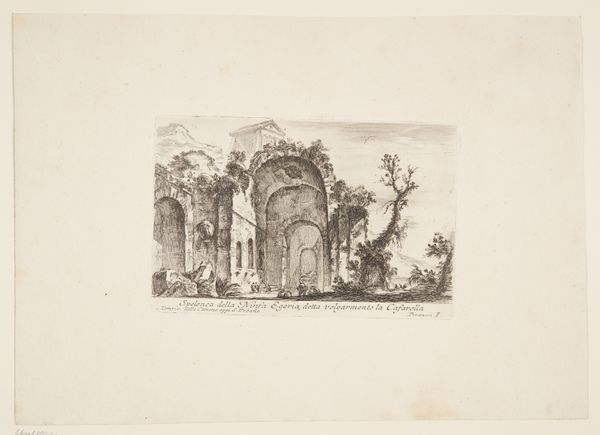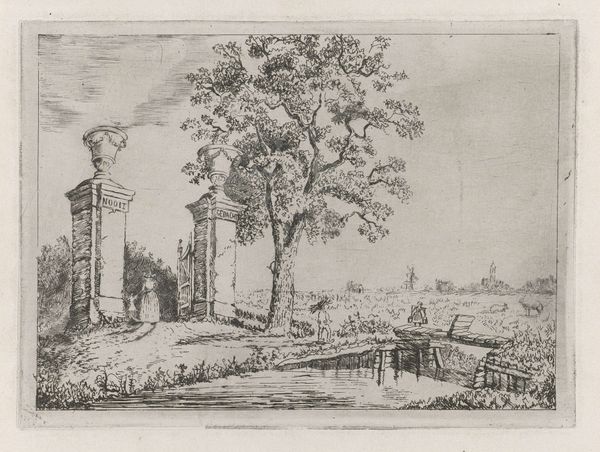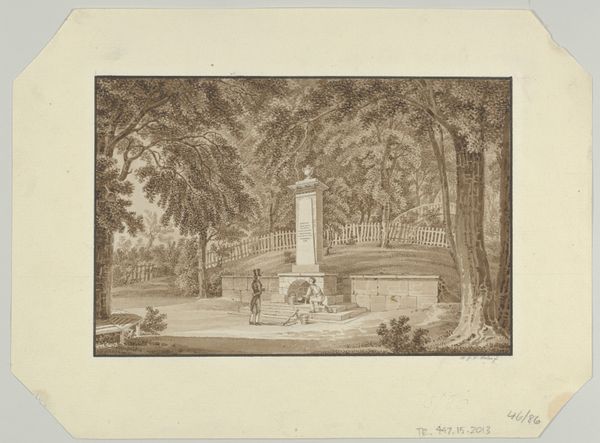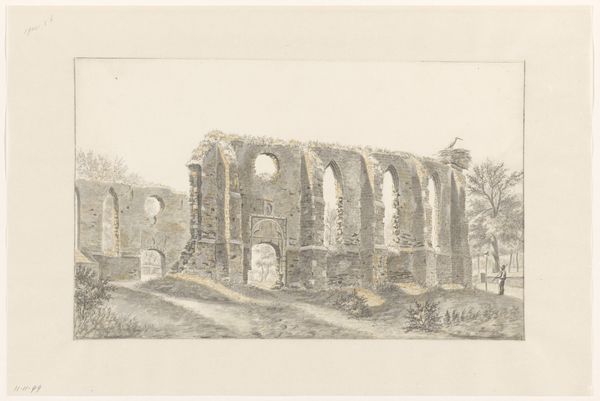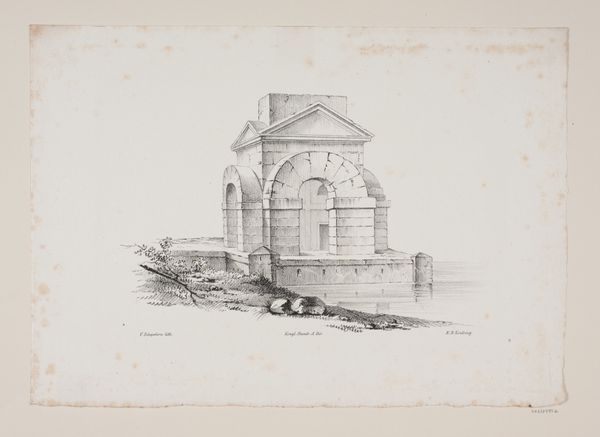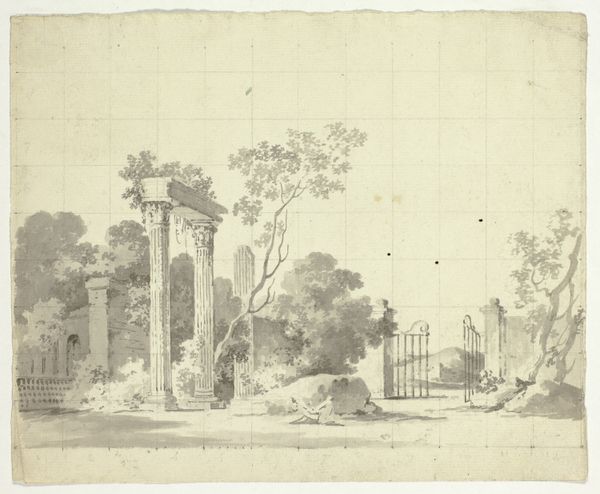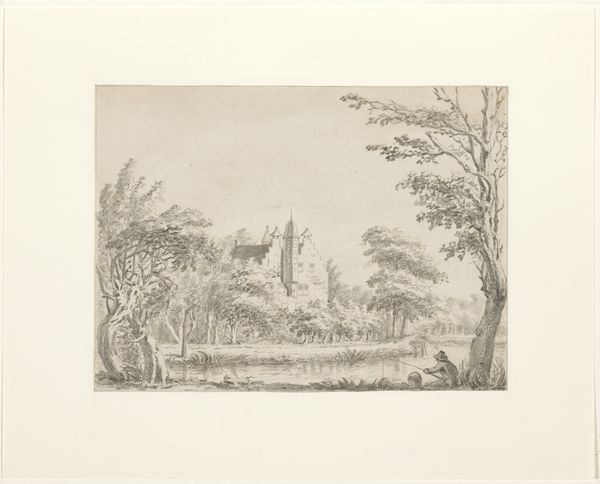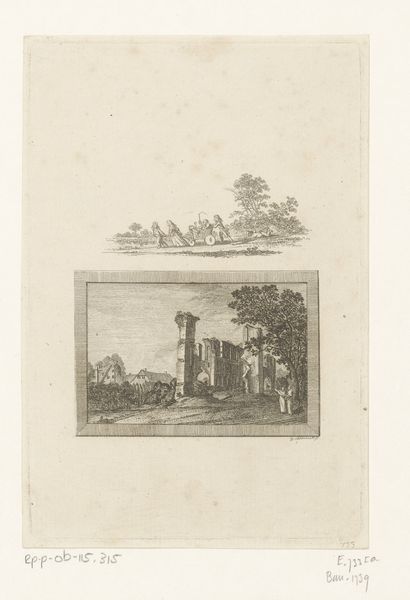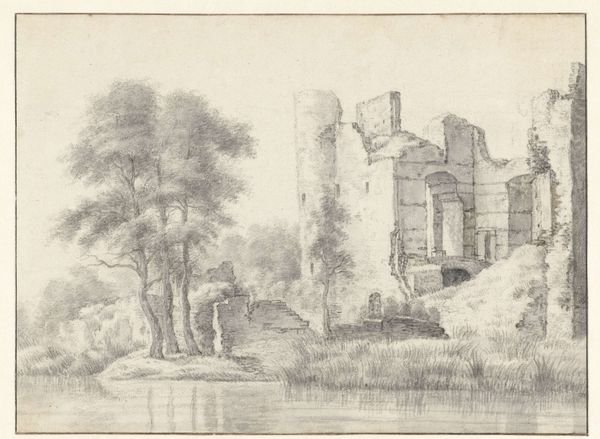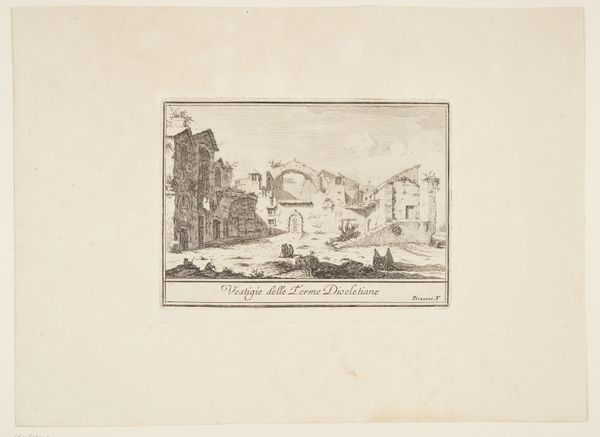
drawing, lithograph, print, etching, pencil
#
drawing
#
lithograph
# print
#
etching
#
landscape
#
etching
#
pencil
#
history-painting
Dimensions: 266 mm (height) x 397 mm (width) (bladmaal)
Editor: This is "P. C. Abildgaards, Samsöes & Juels Grave," made sometime between 1766 and 1829, and attributed to Jes Bundsen. It looks like a drawing, maybe pencil and some kind of ink? It’s rather simple but also stately, like a record of an important place. What strikes you about this piece? Curator: The historicity, immediately. It is more than a landscape. It places specific individuals, through their memorials, within a landscape. We have to consider how the graves function as markers of history, and, in this case, perhaps even political history. Who were these men and why was it important to record their final resting place? Editor: Good point! I hadn't thought about the political implications. Was it common to create artwork of grave sites? Curator: Memorial art definitely had its place, but how it was consumed, and who commissioned it, speaks volumes. Was this for public consumption, or for a private collection celebrating these men? Notice the medium, print and etching. This suggests wider distribution than, say, a unique oil painting. Who might have been the intended audience? Editor: Perhaps other members of their families, or maybe students of history? The act of reproduction would make the art accessible to a broader range of society. Curator: Precisely. And thinking about accessibility, consider how printmaking, with its inherent ability to disseminate images, could have been used to shape public memory and solidify certain narratives around these individuals. How do you think this artwork could shape historical narratives, considering the audience might extend beyond those immediately connected to the deceased? Editor: Maybe it served as a reminder of values or accomplishments associated with these men, or a statement about power, ensuring that these figures were not forgotten. Thank you, it really helps to consider the role of audience and medium. Curator: Absolutely. Art is never created in a vacuum, understanding the historical context really unlocks new levels of interpretation.
Comments
No comments
Be the first to comment and join the conversation on the ultimate creative platform.

